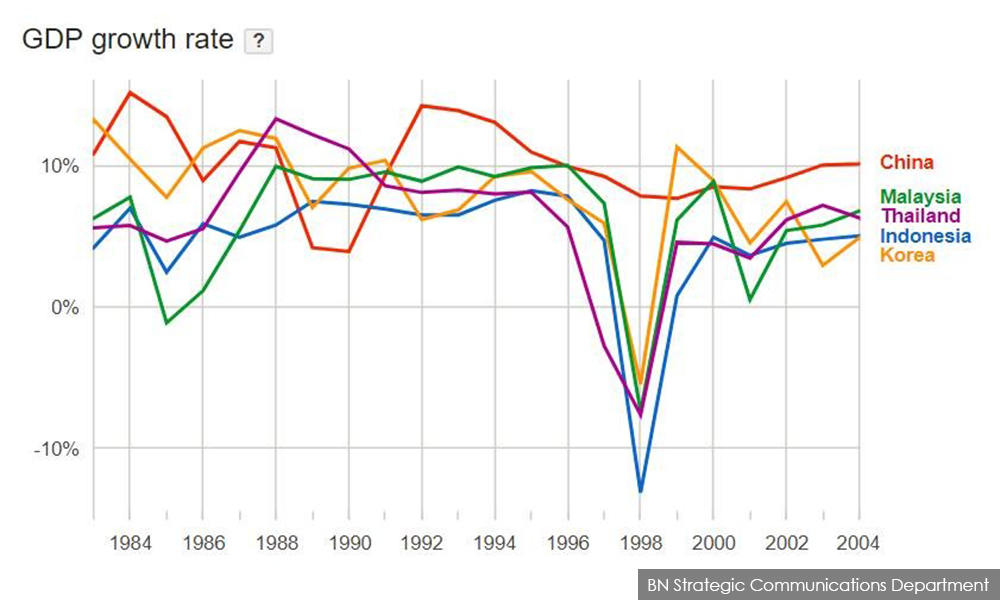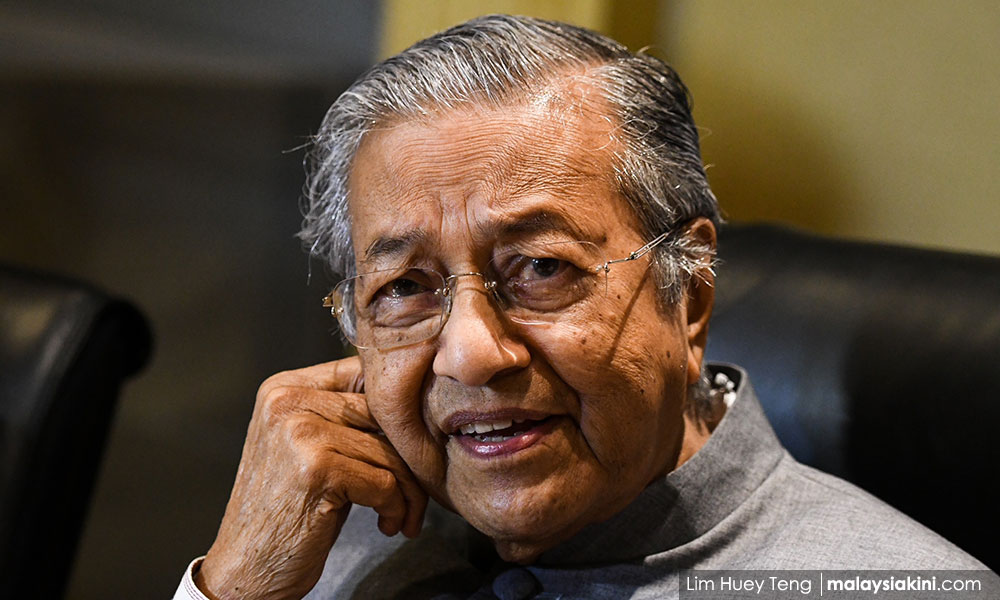COMMENT | Dr Mahathir Mohamad says that without GST, Malaysia was able to become an Asian Tiger.
To correct Mahathir, we were never one of the four Asian Tigers - which were Hong Kong, Singapore, South Korea and Taiwan.
However, Malaysia was known as one of the Tiger Cub economies then, which also included Indonesia, the Philippines, Thailand and Vietnam.
A big part of Malaysia's fast growth in the 1990s was due to the Plaza Accord agreement which western countries signed with Japan on Sept 22, 1985, at the Plaza Hotel in New York City.
Japan was essentially forced to appreciate their currency as its exports based on a cheap currency were hurting these western countries.
Within a few years, the yen sharply appreciated and more than doubled against the US dollar and other currencies.
The sharp appreciation of the yen, the then Taiwanese dollar and the South Korean won encouraged the relocation of industries from those countries to China and Southeast Asia, including Malaysia.
This new wave of foreign direct investment helped to usher in a decade of rapid growth that only ended when the East Asian financial crisis erupted in July 1997.
Without the Plaza Accord, Mahathir would not have those years of strong growth in the early 1990s.
This is why countries around us see the same pattern of growth and growth rates during the period which Mahathir calls his "golden age".

It wasn't unique to him nor to Malaysia, but because Japan was forced by their now expensive currency to urgently move their factories elsewhere, since they needed a cheaper base for production.
You name it, Mahathir sold it
Without sounding ungrateful as Mahathir still did his part, Mahathir and Malaysia in the 1990s were also fortunate beneficiaries of circumstances then and he should not take 100 percent of the credit.
Read more: M'sia once an Asian Tiger which did not feed on GST, roars Dr M
However, Mahathir's Malaysia did not need GST then as they had other sources of funds – many of which are not available to us now.
For one, Mahathir borrowed heavily and quickly until we even reached a debt to GDP ratio of 103.4 percent in 1986. This ratio stayed above 60 percent for 10 years. Compare this to the 50.7 percent ratio now.
Unlike now, Malaysia also had high corporate taxes and personal income taxes of more than 30 percent. Instead, Prime Minister Najib Abdul Razak reduced these taxes from 28 percent to 24 percent now, while also reforming the personal tax system, where many individuals with a monthly income below RM4,000 do not need to pay income tax anymore.
On top of the 10 to 20 percent sales tax and six percent service tax, Mahathir also imposed a sales tax of 19.64 sen per liter for diesel and 58.62 sen per liter for petrol for much of the 22 years he was in charge.
That is right, Mahathir (photo) never subsidised petrol, but taxed petrol instead, as global prices of oil were much lower then at US$10 to US$20 per barrel for much of his time in charge, compared to US$60 per barrel now.

This 58.62 sen petrol tax was only abolished in June 2004.
Mahathir also did not subsidise rice, palm oil or sugar much during his time, as there was simply no need, given that global prices for these commodities then were low.
I invite you to check the historical global prices for these commodities during his time.
Privatisation is another name of selling off shares in government assets in return for money to the government.
Mahathir did this a lot. Among many others, he sold big parts of Telekom Malaysia, Tenaga Nasional, stock exchange, many of our ports such as Port Klang and Kuantan port, some of our banks, all our airports, our national airlines, our Penang Bridge, our postal services and even our Lembaga Padi dan Beras too.
You name it, he probably sold it.
Mahathir was also accused by opposition leaders such as Anwar Ibrahim of raiding Petronas funds frequently to build his pet projects such as KLCC and bailouts for family members.
This is why Petronas cash balances were typically in the region of RM20 billion to RM30 billion during his time, while it is now RM128.2 billion as at end of the year 2017.
In comparison, Najib shows a lot more respect for Petronas and prefers to let the company have enough funds to grow their business.
To top it all, Mahathir also did not implement cash transfer systems such as BR1M.
The cronies got big parts of our economy and our government assets, but the rakyat was not paid anything directly yearly in the same way as BR1M does.
As for the often cited urban legend of Mahathir saving Malaysia in 1998, I would like to ask: who was the prime minister then who had led Malaysia into a position that needs Mahathir to save it?
ERIC SEE-TO is the deputy director of the BN strategic communication department.
The views expressed here are those of the author/contributor and do not necessarily represent the views of Malaysiakini.

